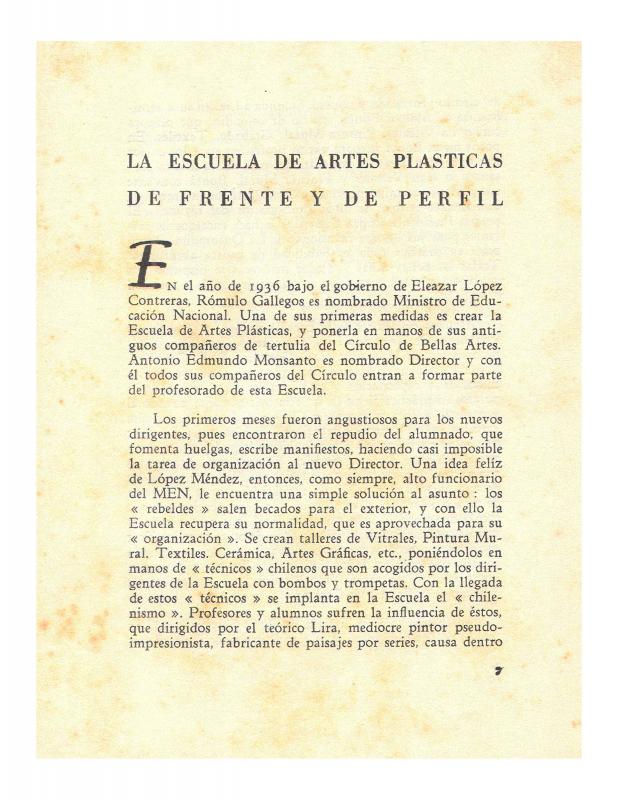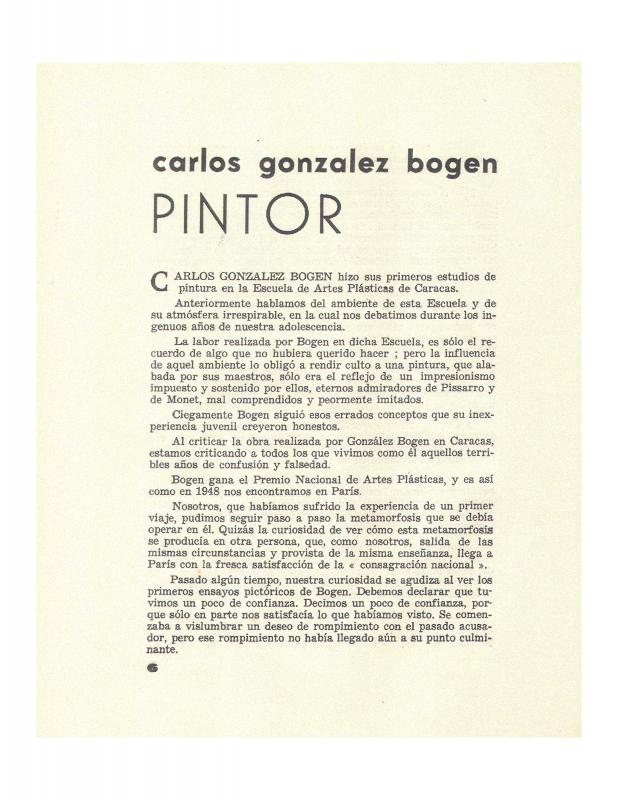Los Disidentes was a group established in Paris in 1950 by a number of Venezuelan artists and writers that lived in the city between 1945 and 1952. From the French capital they intended to challenge the official education provided by the Escuela de Artes Plásticas de Caracas, which was based specifically on landscape painting and nativist art. In the spirit of their name, Los Disidentes sought to breathe new life into traditional and academic art through an assimilation of the values espoused by European abstraction. Among the members in the group were the author of this text, J. R. Guillent Pérez (see also [doc. no. 813478]), and the painters Alejandro Otero [doc. no. 813625], Pascual Navarro [doc. no. 813751], Luis Guevara Moreno, Carlos González Bogen [doc. no. 813695], Mateo Manaure [doc. no. 813569 and doc. no. 813583], Narciso Debourg [doc. no. 813597], Perán Erminy, Rubén Núñez, Dora Hersen, and Aimée Battistini. They were subsequently joined by other Venezuelan artists, such as Armando Barrios, Miguel Arroyo, Oswaldo Vigas, Omar Carreño, Alirio Oramas, and Régulo Pérez. They published a magazine, named after their group, Los Disidentes, which carried all their news, and appeared a total of five times.
Together, Alejandro Otero and Guillent Pérez are considered the primary ideologues and theorists to establish the posture taken by Los Disidentes, the former regarding the arts and the latter their philosophical stance. They both contributed to the eponymous magazine presentations that were philosophically rich in ideas sustaining their conceptual approach and efforts in seeking, in particular, to “transform from the root” the art and culture of Venezuela and of Latin America in general. Profoundly immersed in Existentialism, the philosophy that reigned at that time, Guillent Pérez would incorporate Eastern style teachings years later, especially those from Krishnamurti, into his theories and practice. This essay is divided into two parts (published consecutively in the second and third issues of the magazine Los Disidentes); the first part intends to verify that “Westernization is a component of Latin America”; and the second part is about the same problem, although it focuses on the youth of Latin America.
The underlying interest in this text resides in various aspects, since it anticipates subjects of discussion that years later would be more precisely defined (such as globalization, for example), as a result of the changes brought on by the greater access to information on the part of Latin American youth; and on the other hand, as it points to key elements that reappear and are reiterated in discussions between Latin American artists and theorists during the second half of the twentieth century. Guillent Pérez notably delves into the opposing concepts of art and life (universalism vs. nationalism; origins of westernization vs. Americanism; nativism vs. abstraction). Moreover, he will address the theme of universalism as opposed to regionalism in Caracas, in 1965, during the widespread controversy about Latin American art raised as a result of the article written by Marta Traba “El arte latinoamericano: un falso apocalipsis” (published in the Caracas newspaper El Nacional on May 2, 1965).







